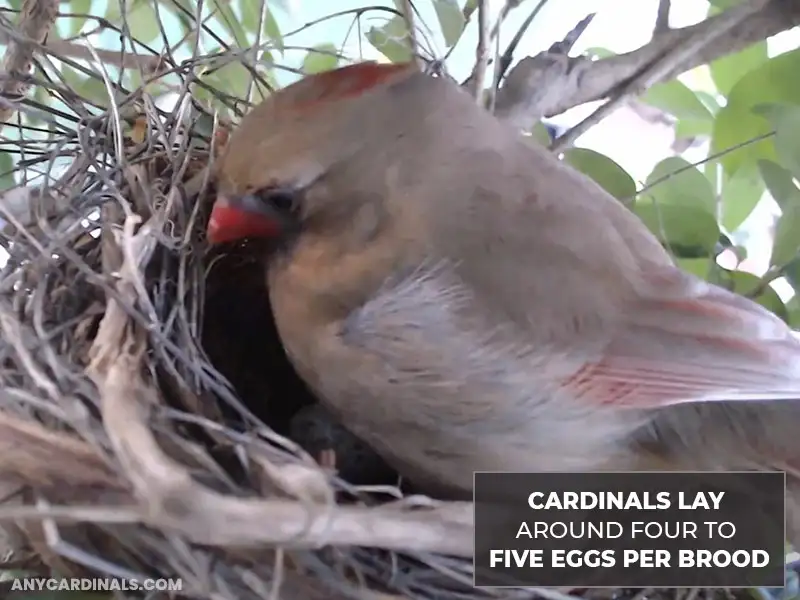How Many Broods Do Cardinals Have?
Like other wild birdies, cardinals also need to produce offspring and raise them to eliminate the probability of extinction. But the question here is how many broods do cardinals have? Do they birth a few or many broods?
Cardinals typically have two to three broods per year. The first brood is usually born in late April or early May, and the second and third broods are typically born in late June or early July and mid-August to early September, respectively.
But do you know why cardinals have so many broods or what factors affect the number of broods cardinals have? We will answer these questions through this content. Let’s read.
Read Related Articles:
What Factors Affect The Number Of Broods Cardinals Have?
Two factors affect the number of broods cardinals have; below, we have briefly described them. So, let’s read on.
Regional Factors:
Some southern cardinals raise three broods each year, while most northern cardinals typically nurture two broods. So, where cardinals live can affect how many broods they will have.
Biological Factors:
Some cardinals tend to be more potent than most others. They are healthy as they get enough nutrients through their diet, and so they can produce more eggs yearly than other cardinals.
How Does The Number Of Broods A Cardinal Has, Affect Its Lifespan?
FYI, the number of broods a cardinal has can never affect its lifespan, and it has nothing to do with its lifespan. As you know, cardinals can live for about three to five years.
If they die before the estimated timeframe, the reasons can be diseases, predator attacks, physical injuries, food shortages, or other accidents.
Why Do Cardinals Have So Many Broods?
It’s their instincts; cardinals must lay many eggs and raise many broods to prevent extinction. This is how these birdies are created.

However, cardinals aren’t the only species that raise many broods. Mourning doves, waterfowl, and some game birds raise more broods than cardinals.
What Benefits & Downsides Do Cardinals Get By Having More Broods?
Cardinals have several benefits and encounter a few downsides by having more broods. First, let’s disclose the benefits; cardinals can eradicate the probability of their extinction by producing and nurturing more offspring.
By extending their population, they can claim more territories and pave the way to prevail over other wild birds. They can rule areas abundant with food sources and diminish predatory threats.
Now, let’s discuss problems cardinals face by raising more broods. As food sources are limited, cardinals face challenges while foraging for food for their offspring.
Besides, laying more eggs and nurturing more babies require a significant and strenuous effort which may cause some cardinals to go weak. So, these are the primary problems and benefits associated with cardinals that have more babies.
How Many Eggs Do Cardinals Lay Per Brood?
Cardinals lay around four to five eggs per brood. Although they lay quite a few eggs, all eggs don’t hatch. Usually, one or two out of four to five eggs make it to the end.

Cardinals abandon the unhatched eggs, and they usually build a new nest every time they are about to raise each brood.
Frequently Asked Questions:
What Month Do Cardinals Lay Eggs?
Cardinals lay eggs between March and august. Typically, they produce one clutch at the beginning of March and lay eggs of the second clutch late in May to July.
Do Cardinals Have Babies Year-Round?
Cardinals that raise two broods each year don’t have babies year-round. But cardinals that produce three broods yearly may have babies year-round. Such a cardinal type is the southern cardinal.
Wrapping Up:
Cardinals are loving birds, and female cardinals possess excellent motherly nature, which is why they lay so many eggs and nurture their adorable babies. Both male and female cardinals exhibit the same affection toward their offspring as we humans do.
However, now you know how many broods cardinals have yearly. We hope this article delivered you what you were looking for. You may stay connected with us on Twitter & Pinterest for more updates on exciting content.

